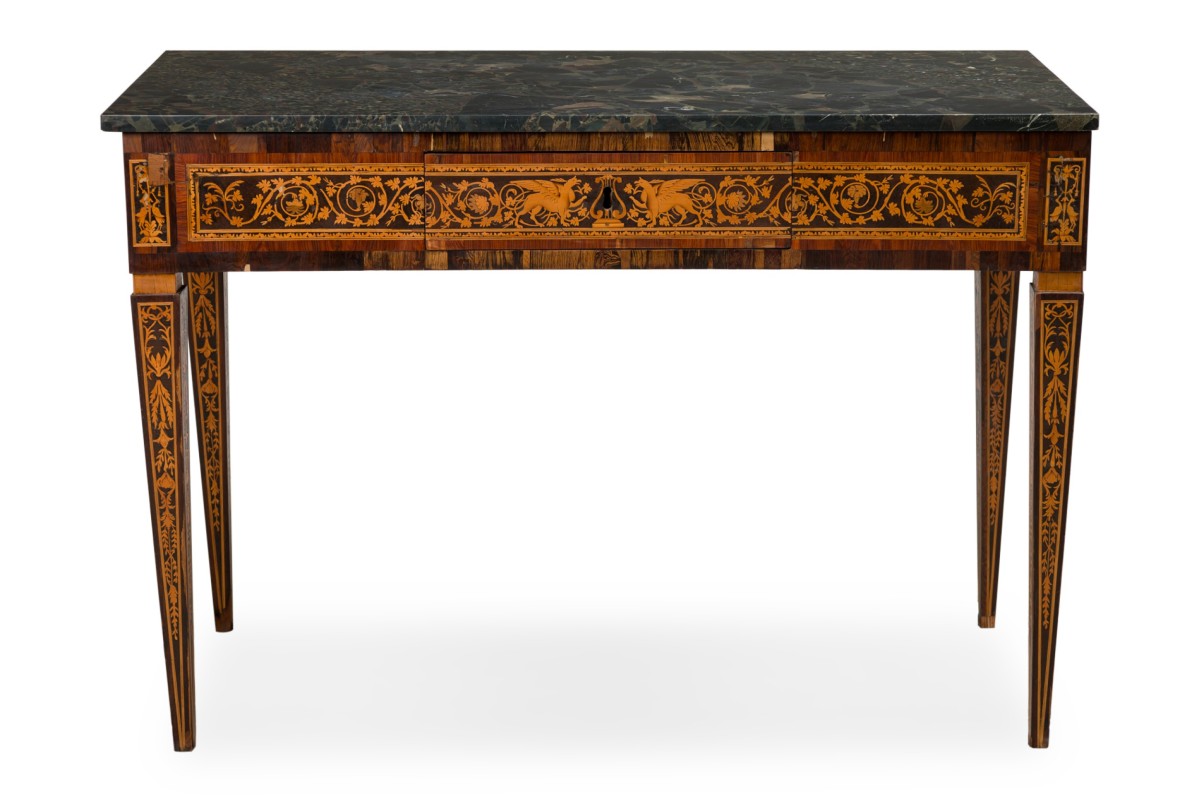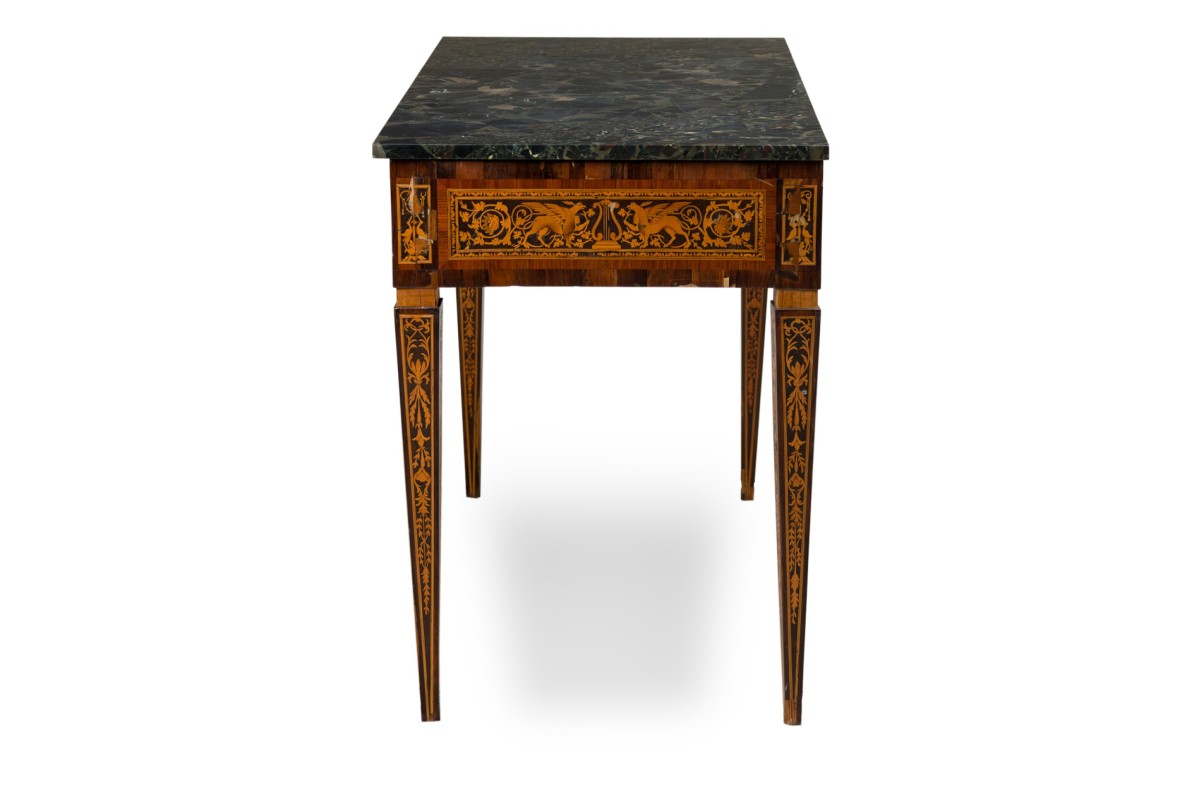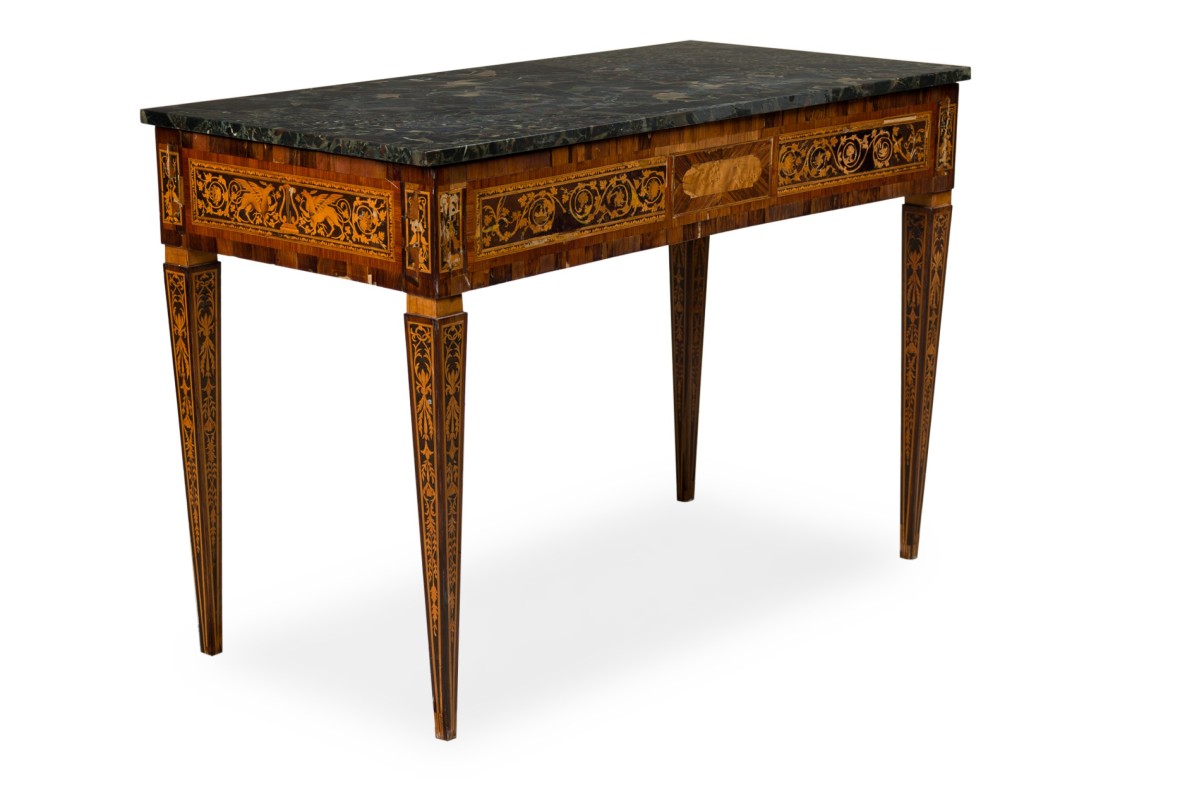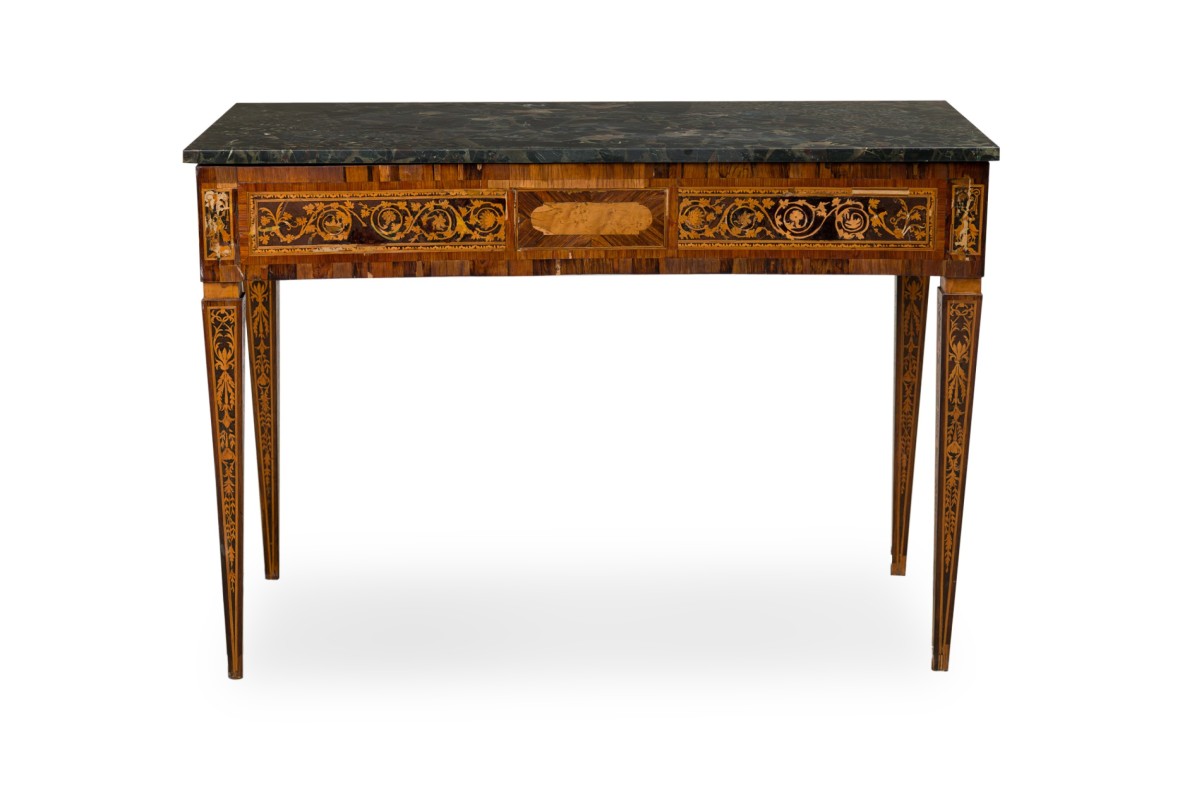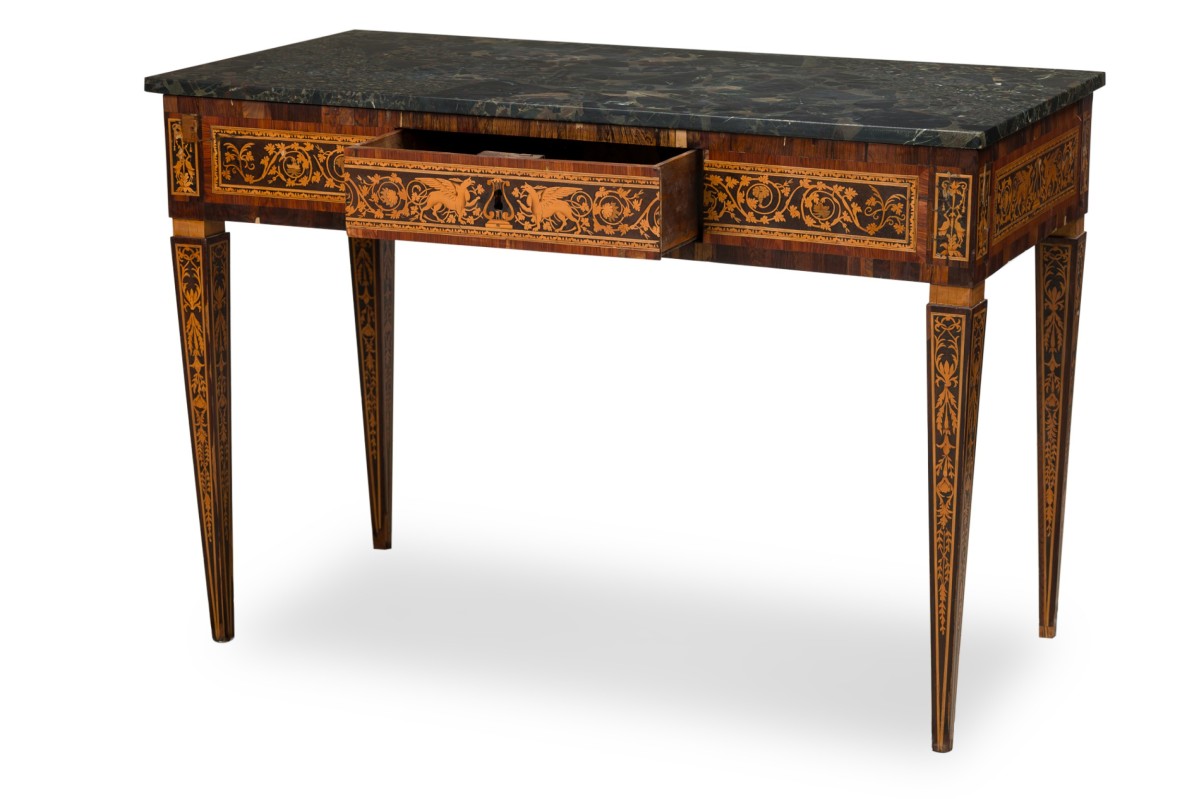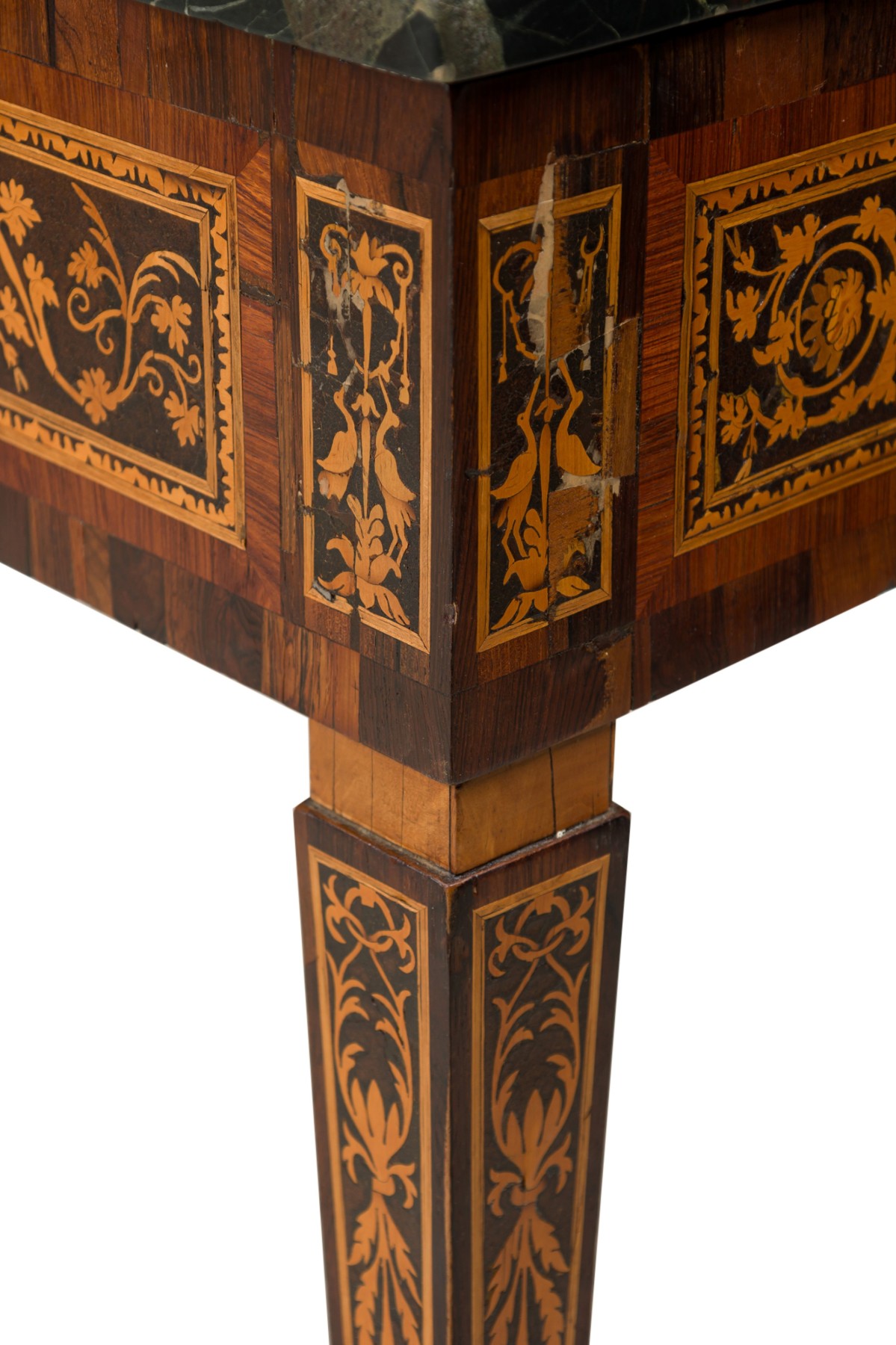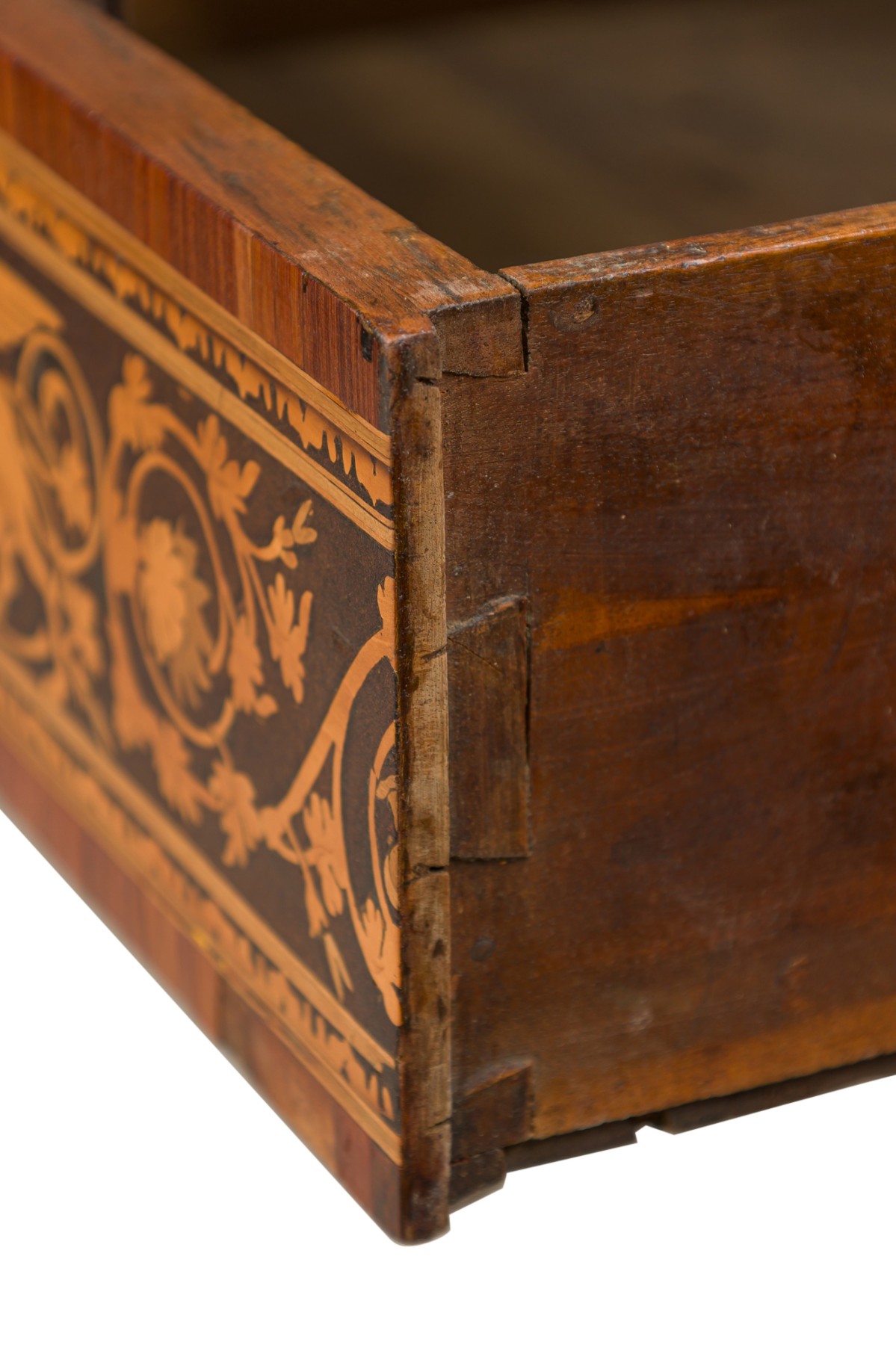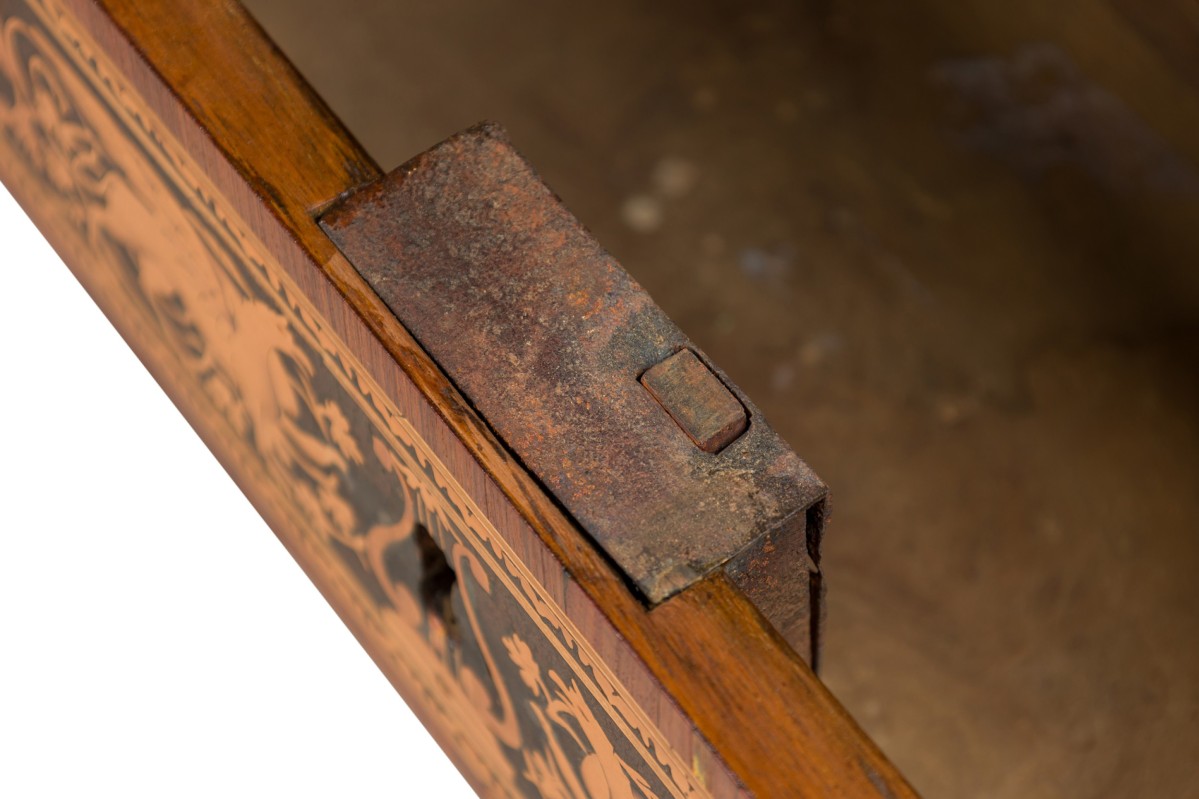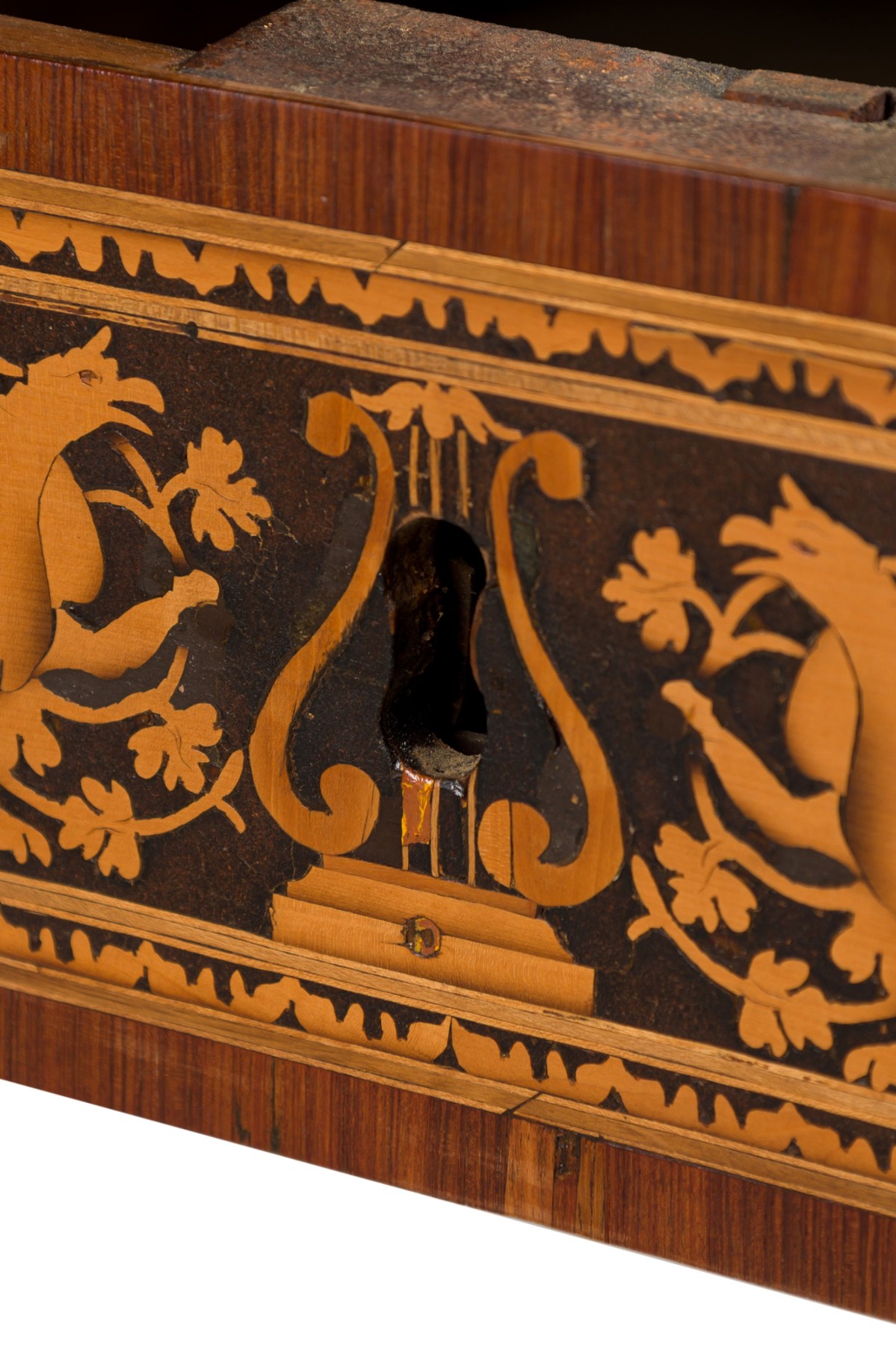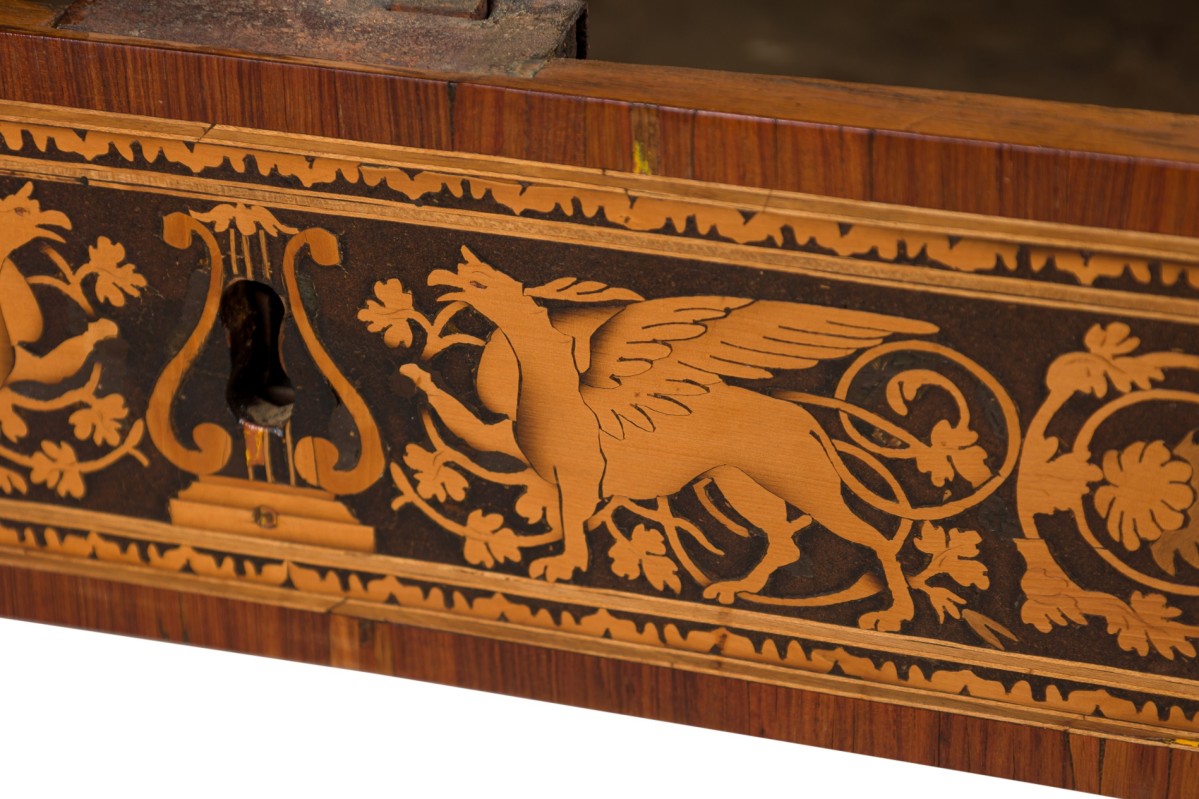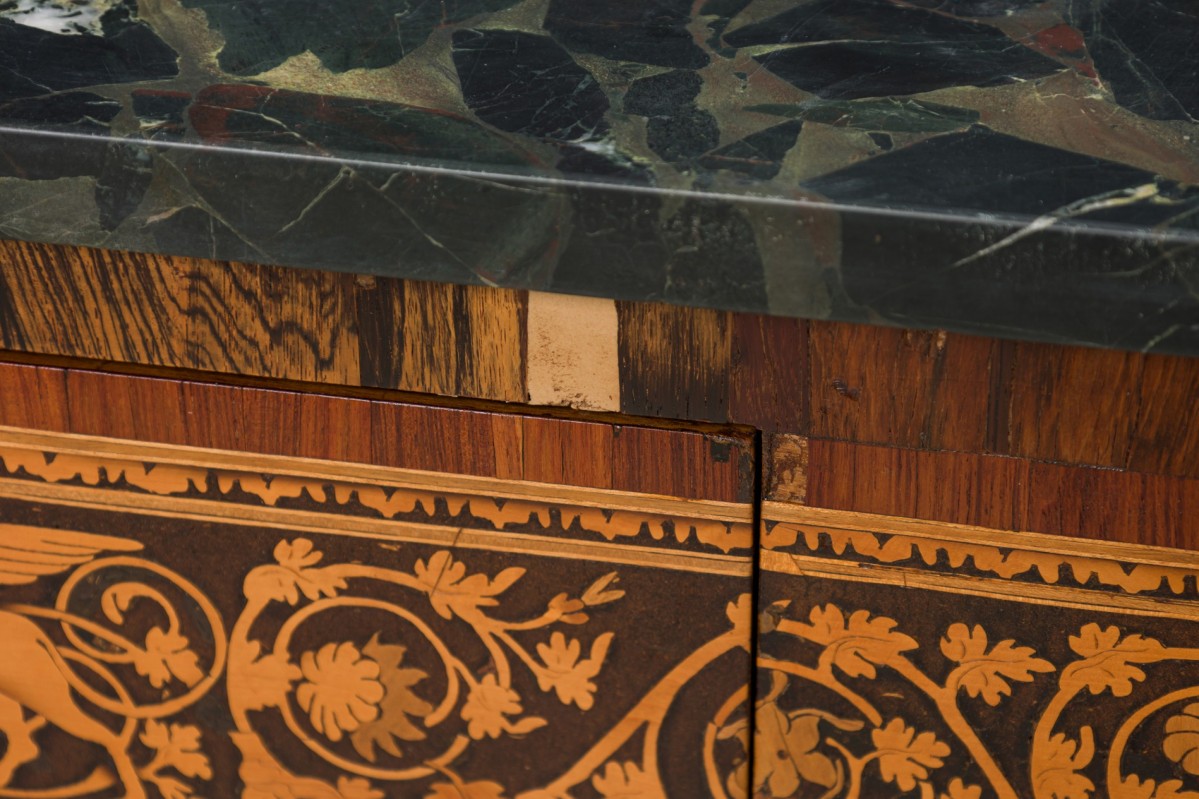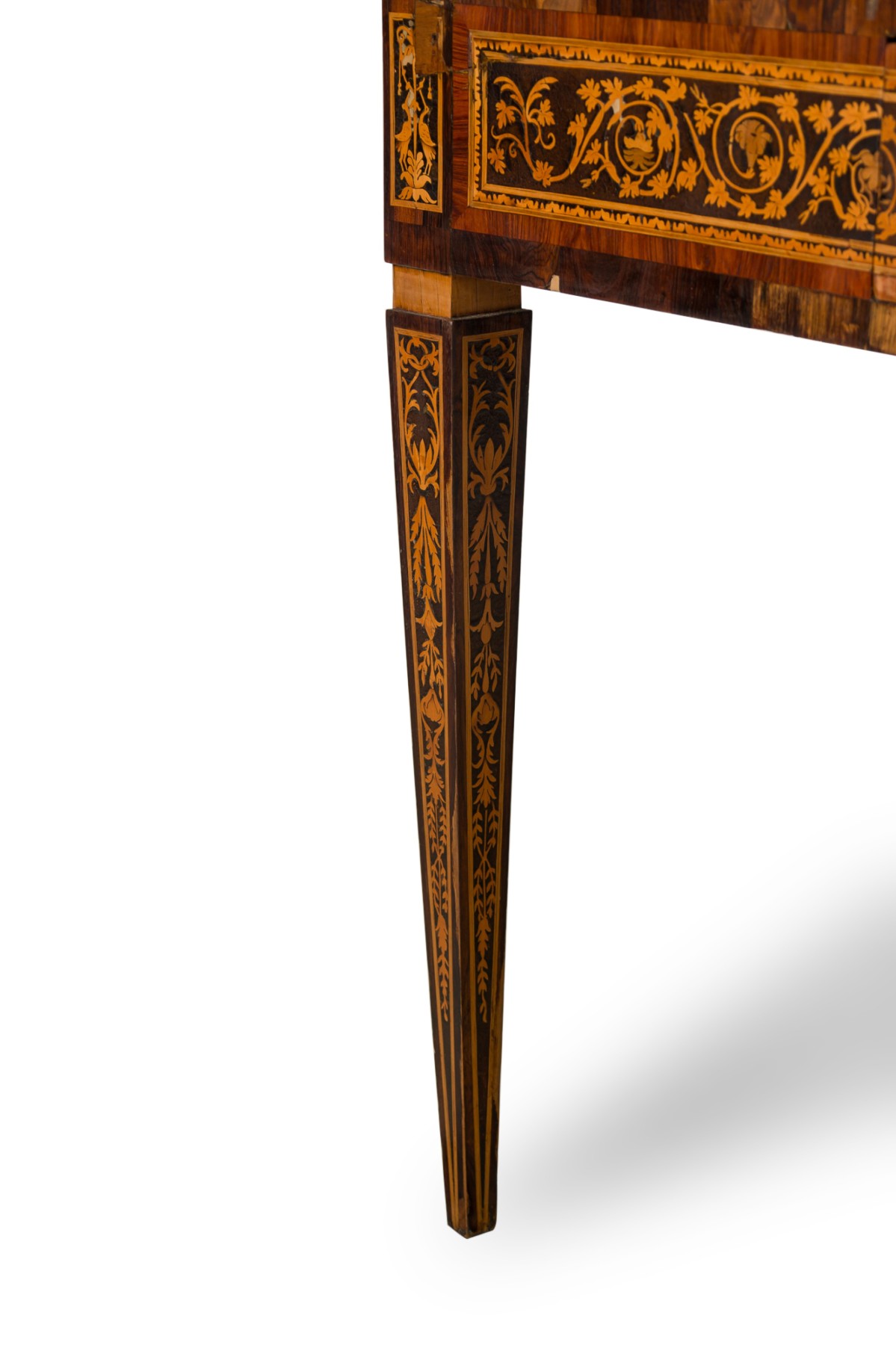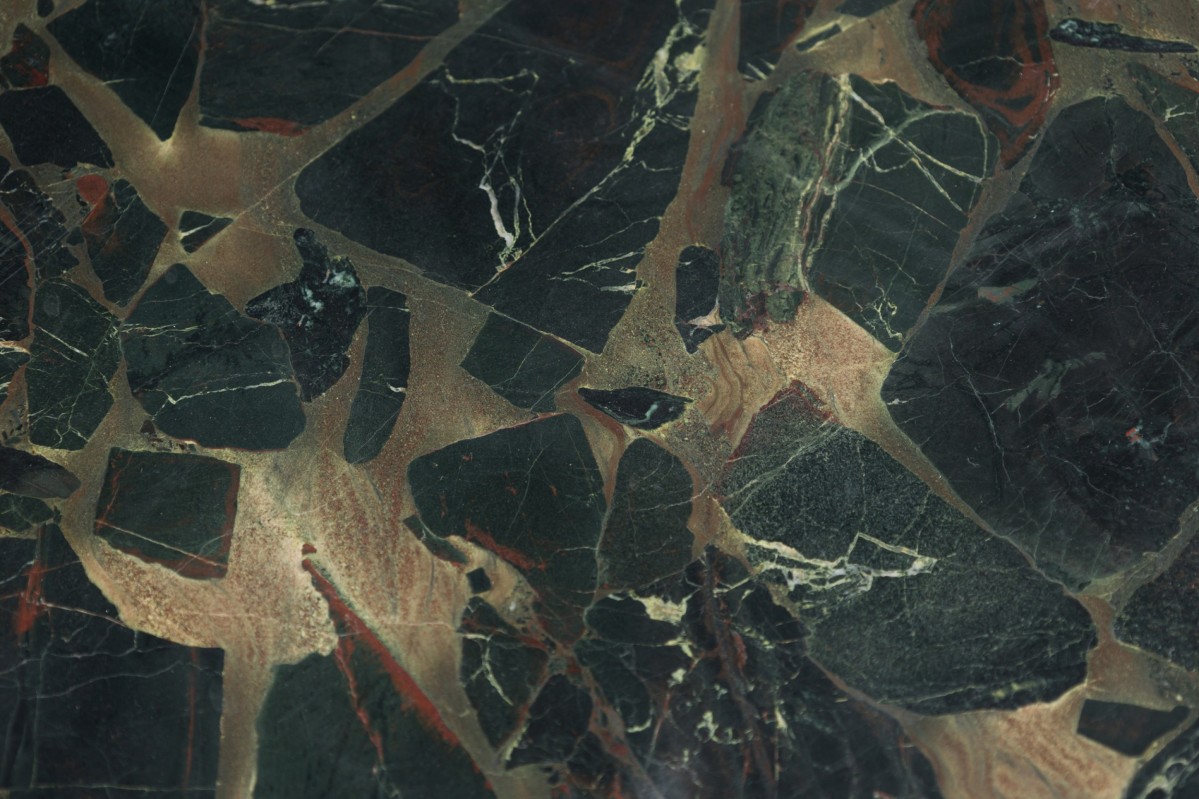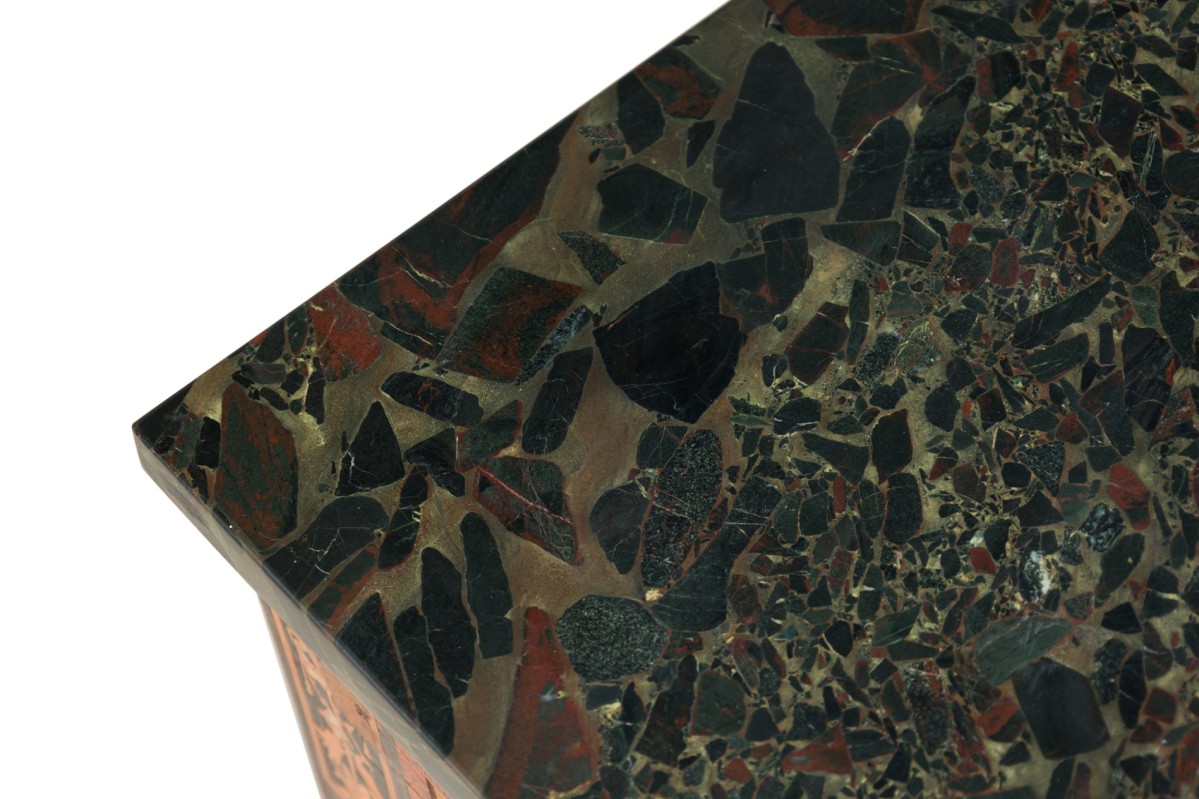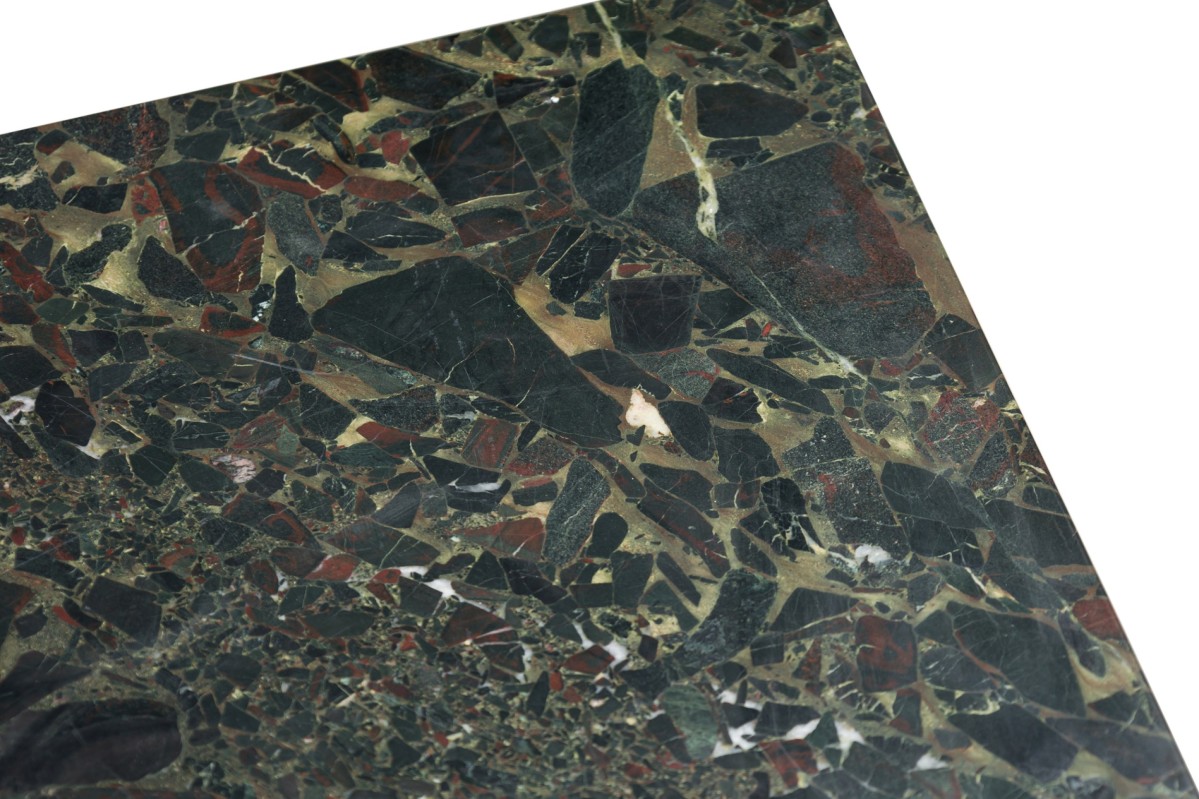X
{{ modalTitle }}
PLEASE FILL IN THE REQUIRED FIELDS.X
X
{{ modalTitle }}
Choose one of the options below.X
ITEM SUCCESSFULLY
ADDED TO PROJECT
Italian Neo-Classic Inlaid Marquetry Single Drawer Centre Table
 Italian
Italian Neo-classic
Neo-classic Tables
Tables Center Tables/Hall Tables
Center Tables/Hall Tables
Newel Warehouse
32-00 Skillman Ave
Long Island City NY - 11101
 (212) 758-1970
(212) 758-1970
Italian Neo-Classic Inlaid Marquetry Single Drawer Centre Table

Newel Warehouse
32-00 Skillman Ave
Long Island City NY - 11101
 (212) 758-1970
(212) 758-1970
 Tables
Tables Center Tables/Hall Tables
Center Tables/Hall Tables
About Giuseppe Maggiolini
Giuseppe Maggiolini (1738-1814) was an Italian furniture designer and decorative arts artist known for his exquisite craftsmanship and intricate designs. He was born in Milan, Italy, and showed an early interest in woodworking and design.
Maggiolini trained under the renowned furniture maker, Giuseppe Maria Bonzanigo, where he honed his skills in woodworking and gained a deep read more..
Neo-classic
Neo-classic refers to the second revival of classic design for interior decoration in the 18th century. This style was inspired by excavations of Pompeii and Herculaneum that begun in 1738. Common motifs include dolphins, lyres, and urns.
Marquetry
A flush pattern produced by inserting contrasting materials in a veneered surface. Rare, grained, and colored woods are usually used, but thin layers of tortoiseshell, ivory, mother-of-pearl, and metals are also seen. If the pattern is of a geometric nature, it is called parquetry.
Walnut
Walnut is a type of wood that can be identified by its rich brown colors and firm and even texture. Walnut is considered one of the finest woods due to its beautiful and unique coloring, strength, and ability to be shaped. Walnut is used for both lumber and veneer.
Neo-classic
Neo-classic refers to the second revival of classic design for interior decoration in the 18th century. This style was inspired by excavations of Pompeii and Herculaneum that begun in 1738. Common motifs include dolphins, lyres, and urns.
Marquetry
A flush pattern produced by inserting contrasting materials in a veneered surface. Rare, grained, and colored woods are usually used, but thin layers of tortoiseshell, ivory, mother-of-pearl, and metals are also seen. If the pattern is of a geometric nature, it is called parquetry.
Walnut
Walnut is a type of wood that can be identified by its rich brown colors and firm and even texture. Walnut is considered one of the finest woods due to its beautiful and unique coloring, strength, and ability to be shaped. Walnut is used for both lumber and veneer.
Neo-classic
Neo-classic refers to the second revival of classic design for interior decoration in the 18th century. This style was inspired by excavations of Pompeii and Herculaneum that begun in 1738. Common motifs include dolphins, lyres, and urns.
Marquetry
A flush pattern produced by inserting contrasting materials in a veneered surface. Rare, grained, and colored woods are usually used, but thin layers of tortoiseshell, ivory, mother-of-pearl, and metals are also seen. If the pattern is of a geometric nature, it is called parquetry.
Walnut
Walnut is a type of wood that can be identified by its rich brown colors and firm and even texture. Walnut is considered one of the finest woods due to its beautiful and unique coloring, strength, and ability to be shaped. Walnut is used for both lumber and veneer.




